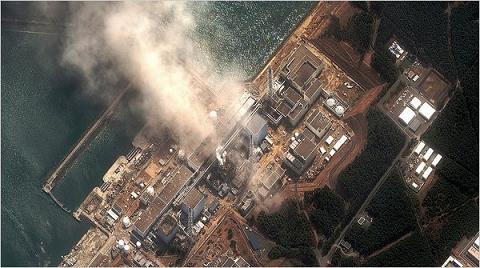Radiation near a quake-hit Japanese nuclear plant reached levels harmful to health after two explosions and a fire at the facility, thousands of people were advised to stay indoors
Radiation near a quake-hit Japanese nuclear plant reached levels harmful to health after two explosions and a fire at the facility Tuesday, thousands of people as a result were advised to stay indoors.
Four of the six reactors at the Fukushima No.1 plant, 250 kilometers northeast of Tokyo, have now overheated and sparked explosions since Friday's massive earthquake and tsunami knocked out cooling systems. "There is no doubt that unlike in the past, the (radiation) figures are at the level at which human health can be affected," said chief government spokesman Yukio Edano.
Tens of thousands have already been evacuated from within a radius of 20 kilometers of the 40-year-old plant, and Prime Minister Naoto Kan urged people living within 10 kilometers of that zone to stay indoors. There was a danger of further leakage, Kan said.
Higher than normal radiation was detected in Tokyo on Tuesday, but a city official said it was not considered at a level harmful to human health and the level fell later in the day.
Low-level radioactive wind from the reactor could reach Tokyo, the Japanese capital, within 10 hours, based on current winds, the French embassy said in a statement on its Japanese-language website on Tuesday.
The troubles at the Fukushima Daiichi nuclear plant began when a massive earthquake and tsunami in Japan's northeast on Friday knocked out power, crippling cooling systems needed to keep nuclear fuel from melting down.
There have been a total of four explosions at the plant since it was damaged in last Friday's massive earthquake and tsunami.
Authorities had previously been trying to prevent meltdowns in three of the Fukishima Daiichi complex's nuclear reactors by flooding the chambers with sea water to cool them down.
The World Health Organization said there was a minimal public health risk.
Police revised on Tuesday the official death toll, putting it at 2,414 dead, with thousands more missing.
